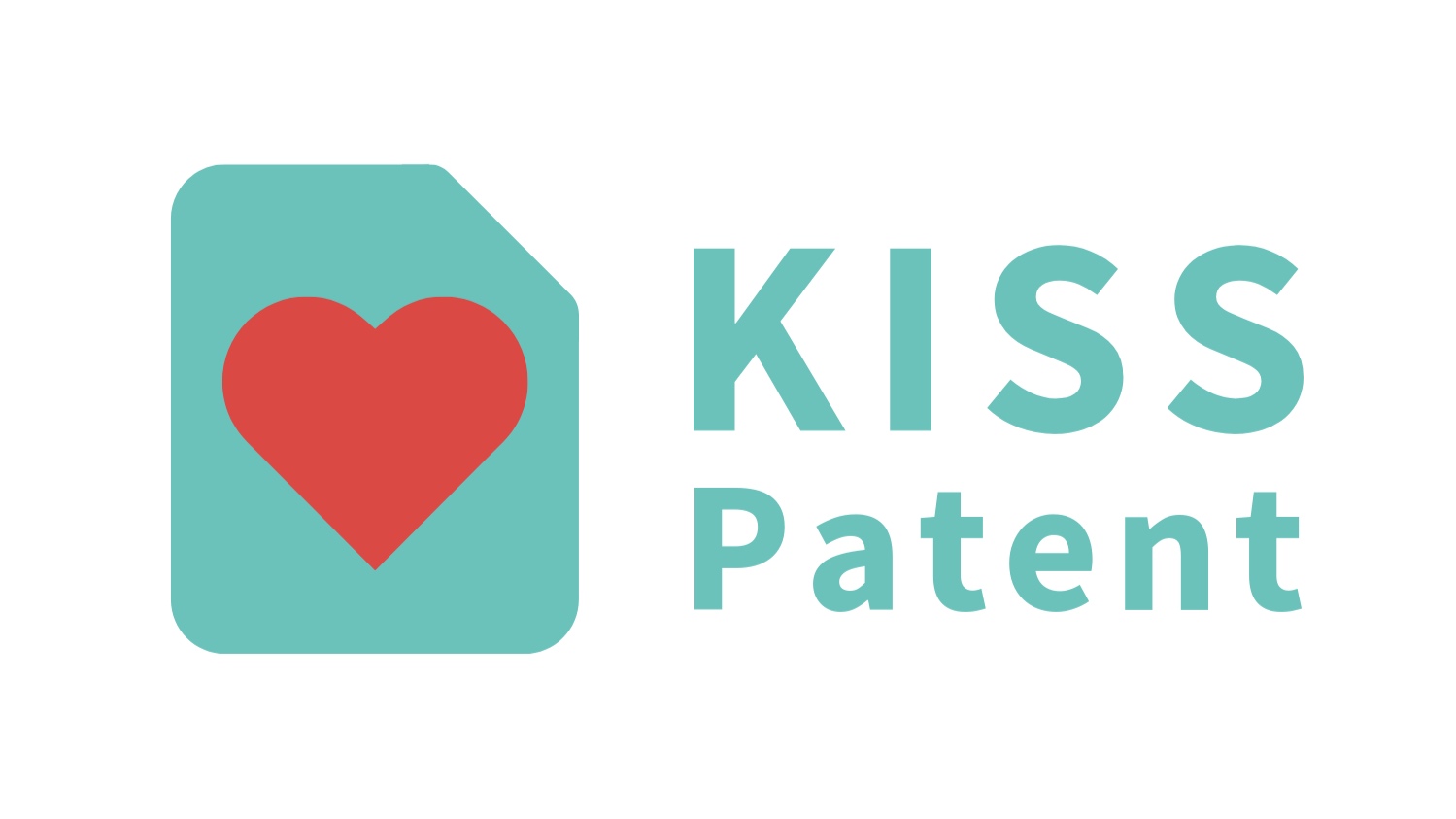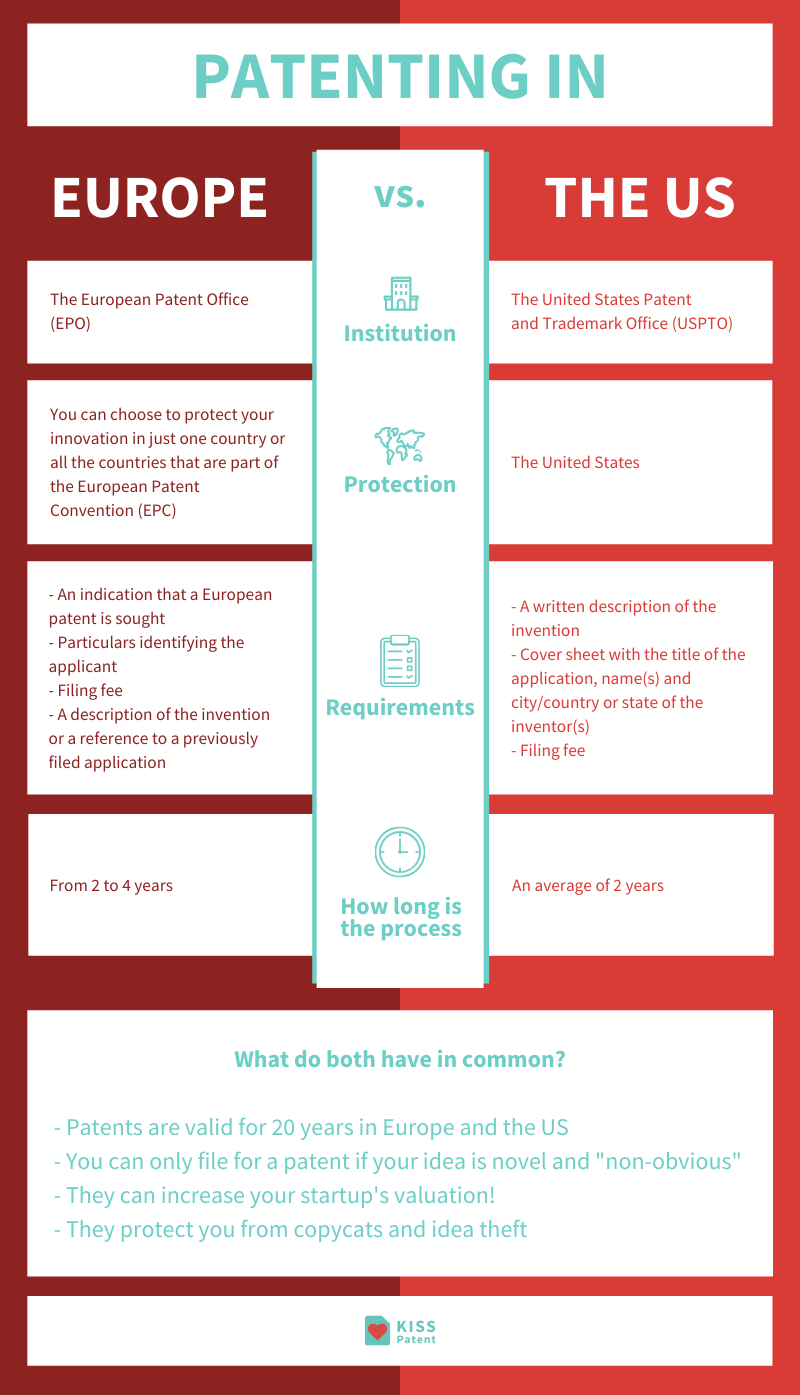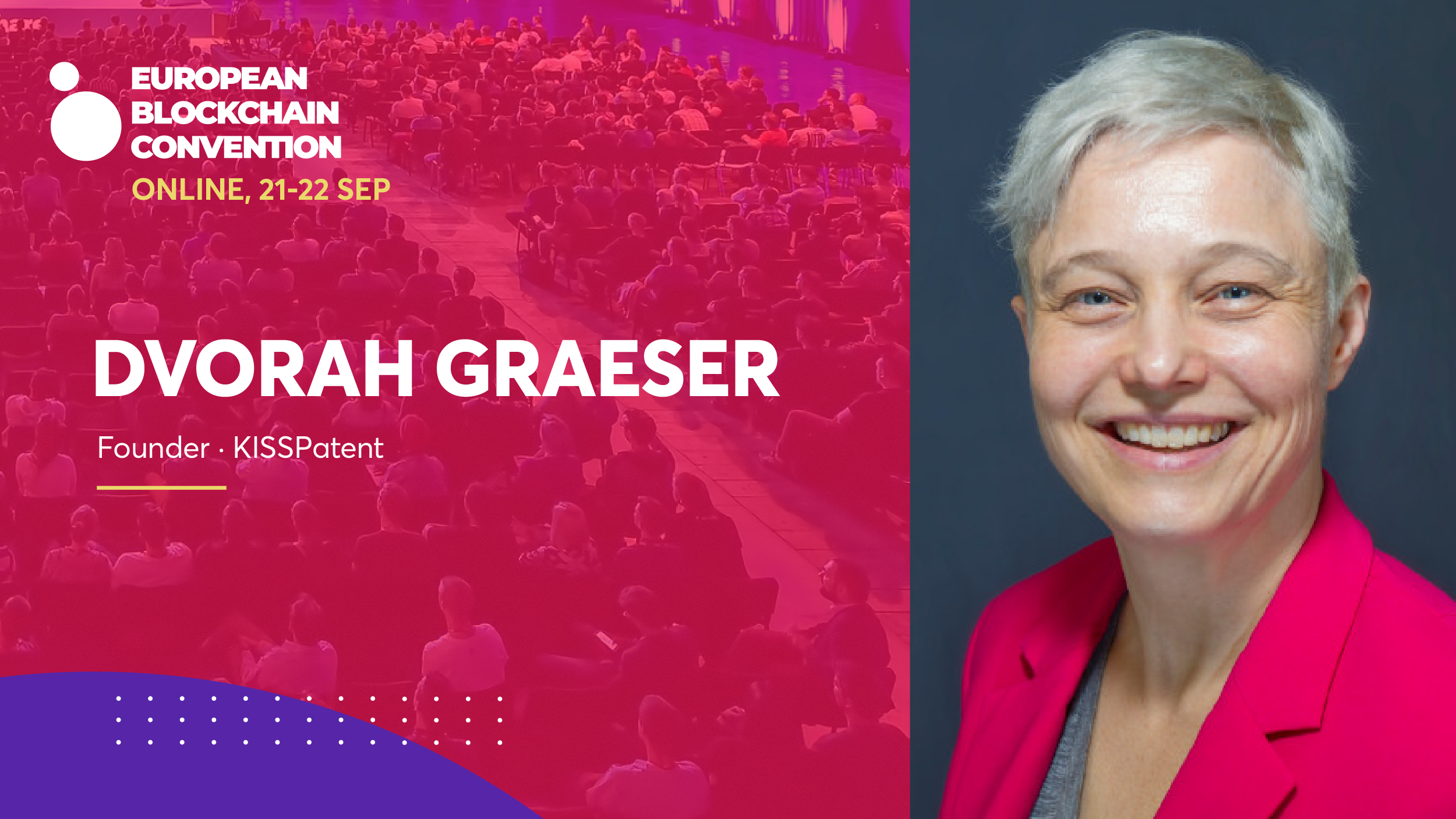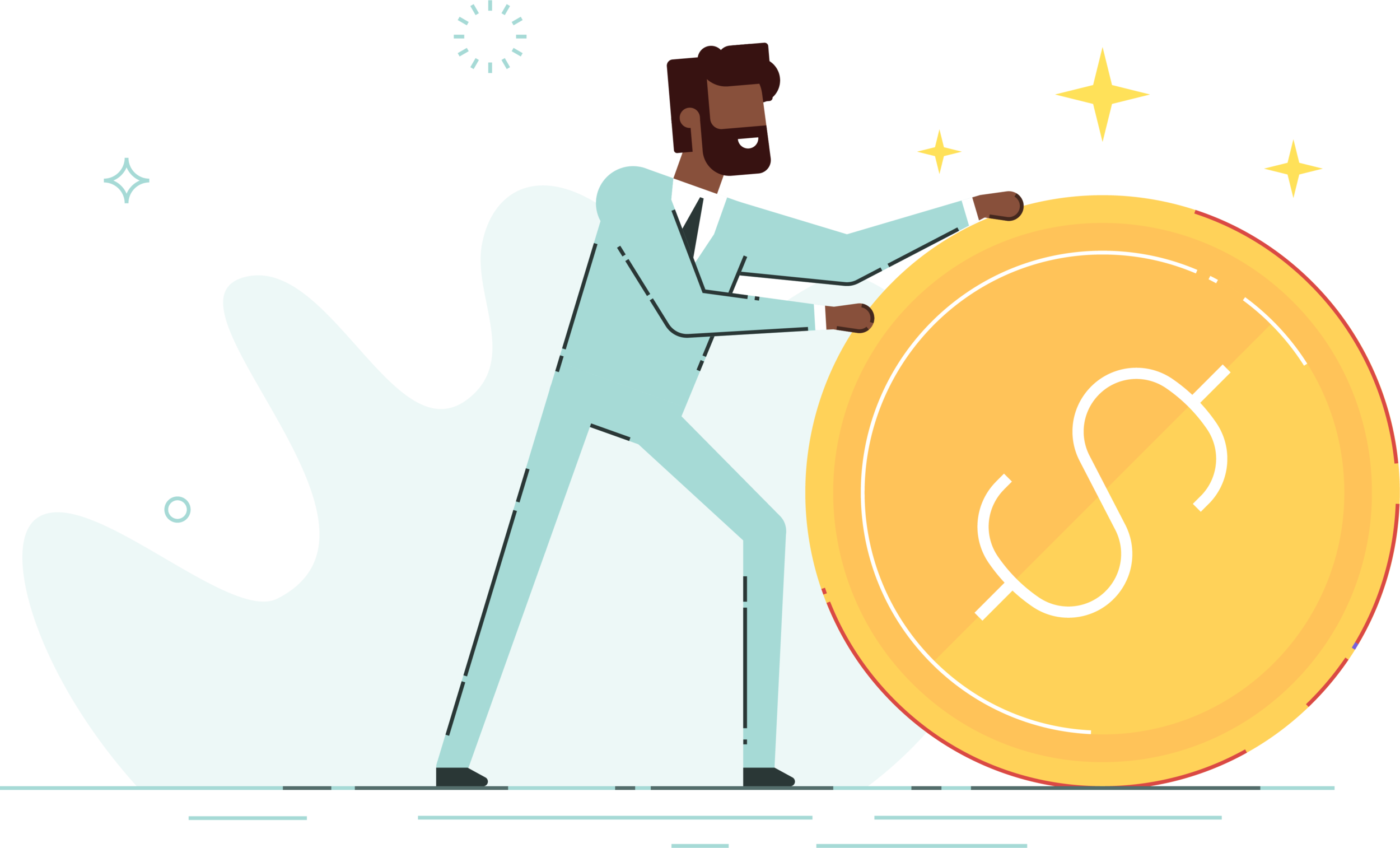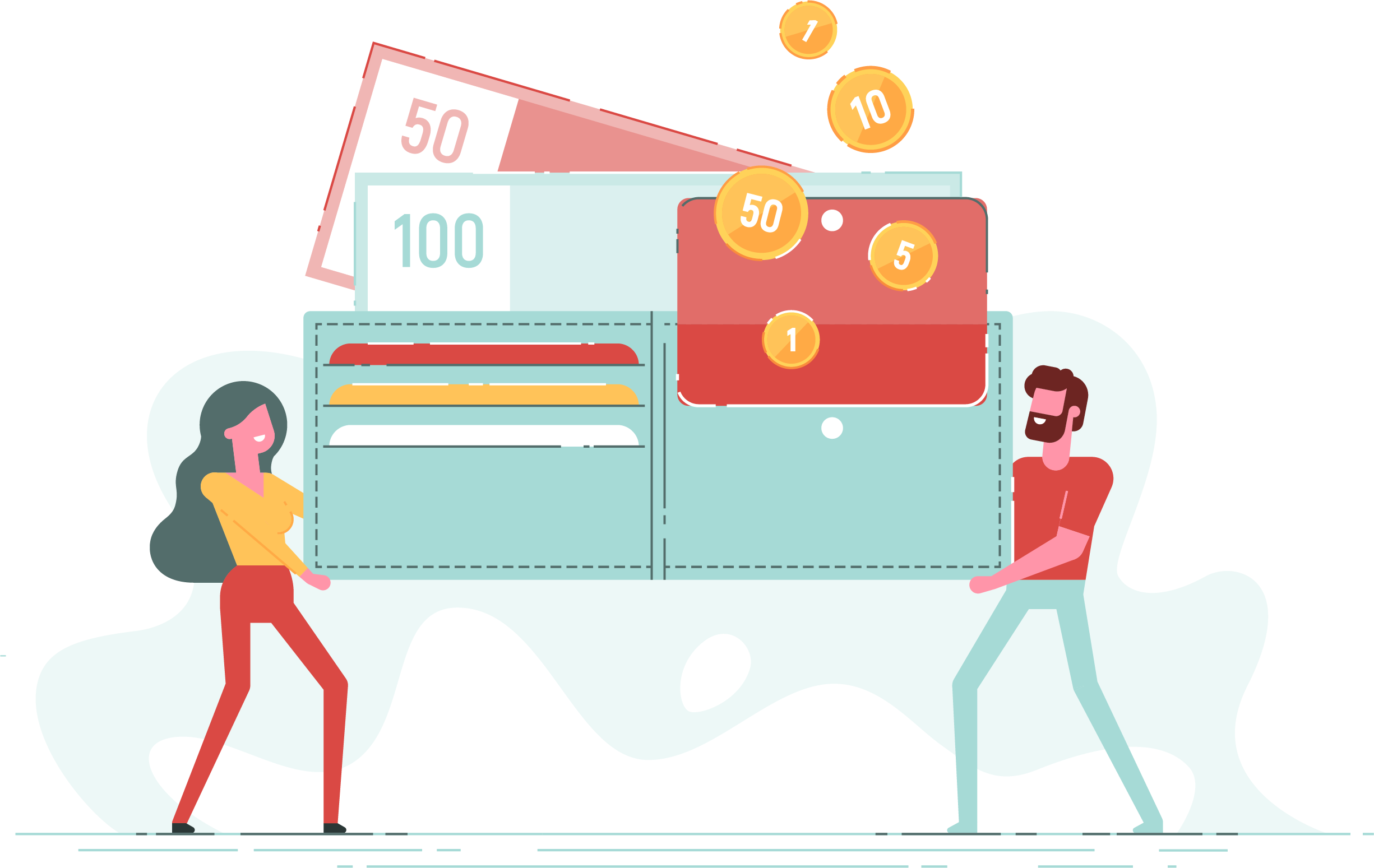For innovators everywhere, European and US markets are a big deal. It’s where thousands of products and services are launched every year.
Competition is very high so if you want to protect your business, you’ll want to get a patent.
But, what’s the difference between patenting your invention in the US and in Europe? Which one is better? How can you decide which one you need?
Let’s explore that in this post!
Differences between patenting in Europe and the US
You need to know the basic differences between both to know what’s a better strategy for your business.
Institutions that grant you a patent
US Application
The United States Patent and Trademark Office (USPTO).
European Application
The European Patent Office (EPO).
Where does it protect you?
US Application
The United States.
European Application
When it comes to patents, Europe acts as a single country. When filing for a patent, you can choose to protect your innovation in just one country or all the countries that are part of the European Patent Convention (EPC).
The countries part of the European Patent Convention are Albania, Austria, Belgium, Bulgaria, Cyprus, Croatia, Czech Republic, Denmark, Estonia, Finland, France, Germany, Greece, Hungary, Iceland, Ireland, Italy, Latvia, Liechtenstein, Lithuania, Luxembourg, Malta, Monaco, Netherlands, North Macedonia, Norway, Poland, Portugal, Romania, San Marino, Serbia, Slovakia, Slovenia, Spain, Sweden, Switzerland, Turkey and, as of June of 2020, the United Kingdom.
In addition, European patent applications and patents may be extended to a number of states not a party to the EPC, these at present being Bosnia and Herzegovina and Montenegro.
Application process
US Application
File a provisional patent application (optional)
File a utility (full) patent application that refers to the provisional application or, convert the provisional application into a non-provisional application
Or - file a utility patent application without first filing a provisional
Prosecute the utility patent application
The US is “first-to-file”, regardless of who invented first - don’t wait to file!
European Application
File a European patent application
Typically, one would pursue the prosecution of the original patent application. One could optionally file a second European patent application claiming (internal) priority over the previously, regularly filed application
Europe uses the “first-to-file” system as well.
How do you file?
US Application
You can file online using the Electronic Filing System. This system allows you to save materials in your account for submission and to file follow-up materials.
European Application
Online with the EPO online filing software, case management system, or web-form filing service. Also, you can go to the EPO offices, use the postal service, or fax your application!
What’s the best IP protection for your idea?
Take our short survey to find out what type of intellectual property is right for your idea!
Conditions to file for a patent
US Application
To patent something it must be novel. The U.S. Patent Office strictly defines a “novel” patent as one that has no other definition or description of it in the world, or, that were not known in America within one year of the filing of the patent application.
Also, it must be non-obvious. You can achieve a patent by changing an existing product or ing that changes its character in a “non-obvious” way. In this instance, the alteration must be of the type that would not occur to a person of ordinary skill and ability to use the item as intended.
Laws of nature, physical phenomena, and abstract ideas are not a patentable subject matter. Also, you can't get a patent upon just an idea. For example, you get a patent for a new machine or manufacture, not the idea of it.
European Application
You have to consider two things when patenting an idea: it has to be novel and include an inventive step. Novel means that there’s nothing out there like your invention. The inventive step considers whether a solution is obvious or not. This is similar to the US application.
Consider that you can’t patent:
Programs for computers. This part is a bit tricky since you can actually patent a computer program when running on a computer, it causes a further technical effect going beyond the “normal” physical interaction between the software and the hardware. If you are working on software
Methods for treatment/diagnostic methods. This exclusion doesn’t include products, substances, and compositions. You can patent inventions like medicine or surgical instruments
Plant and animal varieties
Inventions that their commercial exploitation would be contrary to the “ordre public” or morality
The best alternative to know if your invention is patentable is to make a patent search, or better, consult a patent expert that will guide you through the entire process.
Requirements for a filing date
US Application
A written description of the invention
Cover sheet with the title of the application, name(s) and city/country or state of the inventor(s)
Filing fee
The cover sheet and filing fee are not needed, but there is an extra charge if these are given at a later date
European Application
An indication that a European patent is sought
Particulars identifying the applicant
Filing fee
A description of the invention or a reference to a previously filed application
How long is the patent process?
US Application
An average of 2 years
European Application
From 2 to 4 years
How long does a granted patent stay valid?
US Application
20 years
European Application
20 years
TL;DR:
Differences between patenting in the US and Europe, an infographic
Deciding which option is the best for you
Every idea is unique so you should carefully consider your options before making any decision.
This is a business decision.
Where are you located? Where do you plan on selling? What markets matter the most to you? What are you trying to protect?
For example, if you’re developing software, it’s possible that you won’t be able to patent it in Europe and just in the US.
Generally speaking, in Europe, only very technical software patents are allowed. You can read more about it here.
Just like the question of when to file for a patent, where to file for a patent is case sensitive. Our best advice is to have a strong patent strategy.
Seeking professional advice makes everything easier. You’ll have a faster process, with fewer questions and rejections, and faster approvals. It saves time, headaches, and unnecessary expenses.
Protecting your ideas and filing for a patent is a very important decision for your business, you can’t wing it, contact us!
Wondering if your idea is patentable? Have a question about this article? We can answer all of your questions — just hit "contact us" down below!
